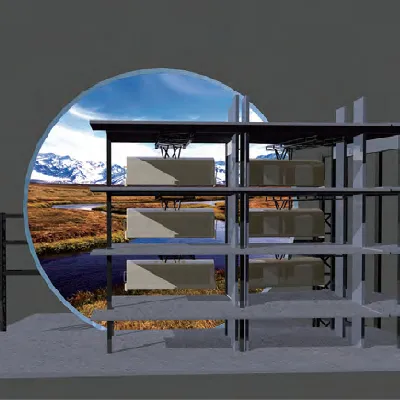- Albanian
- Arabic
- Belarusian
- Bengali
- Czech
- English
- French
- German
- Hebrew
- Hungarian
- Indonesian
- irish
- Italian
- Japanese
- kazakh
- Persian
- Russian
- Thai
- Uzbek
- Vietnamese
Top Roller Coaster Design Firms Innovating Thrilling Experiences in Amusement Parks
The Fascinating World of Roller Coaster Design Companies
Roller coasters have long been a staple of amusement parks, providing thrills and excitement to millions of visitors each year. Behind the exhilarating drops and dizzying loops, however, lies a complex world of engineering and creativity, driven by specialized roller coaster design companies. These firms are responsible for transforming imaginative concepts into tangible rides that push the boundaries of physics and daring.
One of the leading names in the roller coaster design industry is Intamin Amusement Rides. Founded in 1967, Intamin is renowned for its innovative designs and groundbreaking technology. They have created some of the most famous roller coasters around the world, including the record-breaking Kingda Ka at Six Flags Great Adventure in New Jersey, which stands at a staggering 456 feet tall. Intamin's commitment to safety and engineering excellence has made them a preferred choice for theme parks looking to add a show-stopping attraction.
Another major player in the field is Bolliger & Mabillard (B&M), a Swiss company known for its smooth ride experiences and intricate designs. Established in 1988, B&M has become synonymous with high-quality roller coasters, including the iconic Montu at Busch Gardens Tampa and Fury 325 at Carowinds. B&M's use of state-of-the-art materials and advanced engineering techniques ensures that their coasters provide both thrilling experiences and exceptional reliability, making them a favorite among amusement park operators and enthusiasts alike.
Arrow Dynamics, although now defunct, played a crucial role in the history of roller coaster design. Founded in the 1970s, Arrow was responsible for many pioneering designs, including the first suspended coaster, The Bat at Kings Island. Their work laid the groundwork for many modern designs and techniques used by companies today. Many iconic coasters still in operation today were built by Arrow, showcasing their lasting impact on the industry.
roller coaster design companies

In recent years, there has been a rise in the number of smaller design firms making waves in the roller coaster world. Companies like RMC (Rocky Mountain Construction) have gained popularity for their innovative approaches to coaster design. RMC specializes in converting older wooden coasters into hybrid rides, combining the classic feel of wood with steel track technology for smoother and more thrilling experiences. Their transformation of Mean Streak at Cedar Point into Steel Vengeance is a testament to their creative prowess, turning a once obsolete ride into a premier attraction.
Moreover, the role of technology in roller coaster design has expanded significantly. Modern roller coasters now incorporate virtual reality (VR), allowing riders to experience a whole new level of immersion. Design companies are collaborating with tech firms to enhance the coaster experience through sensory stimulation, combining speeds and visual effects that cater to the thrill-seeker’s sense of adventure.
The future of roller coaster design appears brighter than ever. As technology evolves, we can expect to see more innovative designs that defy gravity and engage riders in unique ways. With advancements in safety measures and engineering techniques, roller coasters are becoming more thrilling yet safer than ever.
In conclusion, roller coaster design companies play a pivotal role in shaping the landscape of amusement parks worldwide. Their creativity, engineering skills, and commitment to safety ensure that roller coasters remain a beloved attraction for thrill-seekers of all ages. As they continue to push the boundaries of what is possible, the excitement of roller coasters will undoubtedly endure for generations to come.
-
Flume Ride-Hebei Zhipao Amusement Equipment Manufacturing Co., Ltd.|Thrilling Water Attraction&Customizable DesignJul.30,2025
-
Flume Ride - Hebei Zhipao Amusement Equipment | Water Coaster, Thrilling DescentJul.30,2025
-
Flume Ride - Hebei Zhipao | Thrilling Water AttractionJul.30,2025
-
Flume Ride: Thrilling Water Attraction by Hebei Zhipao|Log Flume Manufacturers&Flume Ride DesignJul.30,2025
-
Flume Ride-Hebei Zhipao Amusement Equipment Manufacturing Co., Ltd.|Thrilling Water Coaster, Safe DesignJul.30,2025
-
Flume Ride-Hebei Zhipao Amusement Equipment Manufacturing Co., Ltd.|Thrilling Water Attraction, Safe DesignJul.30,2025
